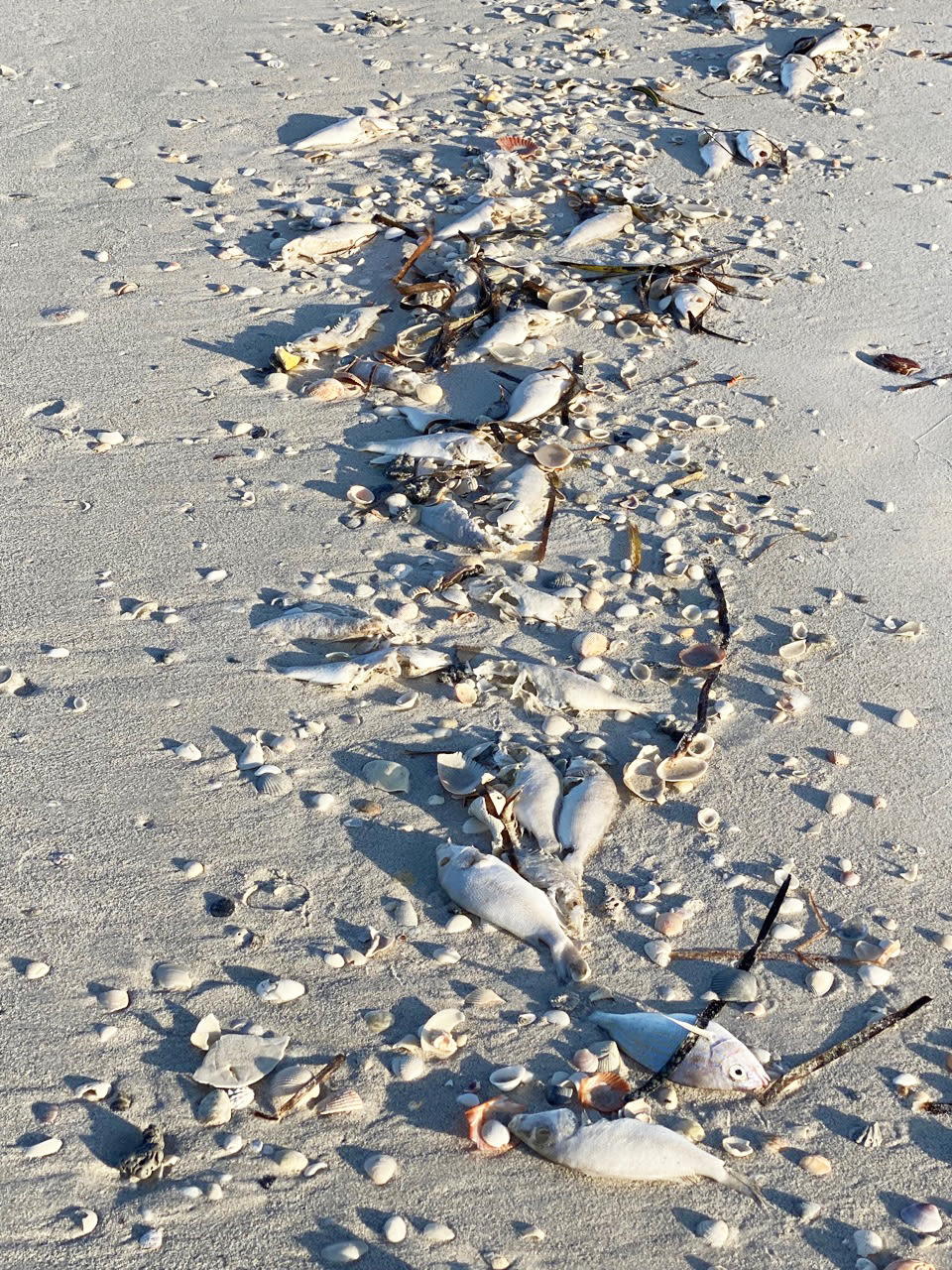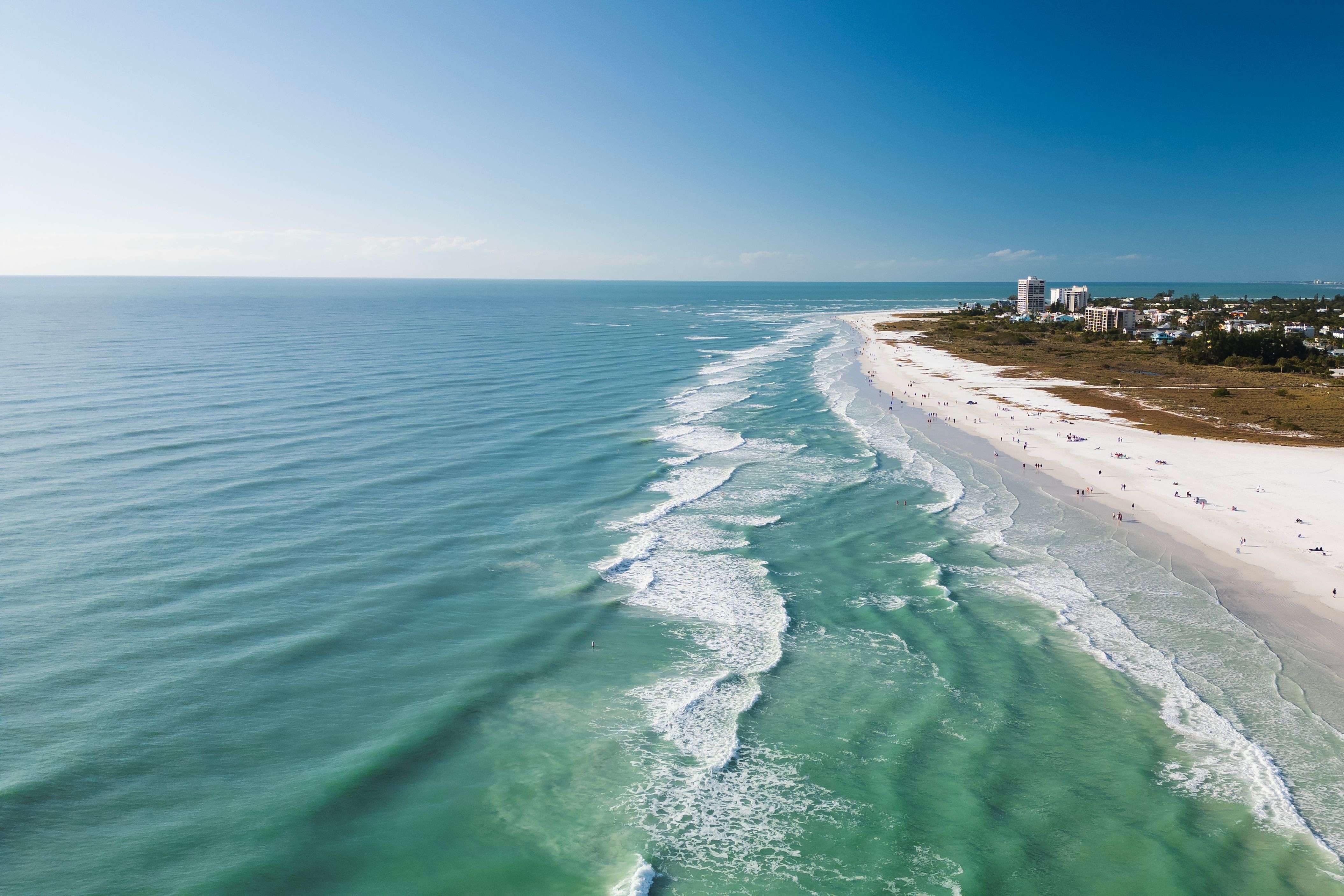High Levels of Red Tide Are Present at Many Sarasota Beaches. So Where Is It Safe to Go?

A past red tide event at a local beach.
Image: Judy Burns
Red tide blooms in Sarasota are beginning to feel as seasonal as Christmastime. After Hurricane Ian, there were concerns that all the nutrient-laden water from out east would make its way into our bays and out toward our beaches.
Now those concerns have been realized.
The presence of high levels of the Karena brevis bacteria that causes fish kills and irritates the throats, noses and eyes of the public was first reported three weeks ago, and reports of dead fish along our white sand beaches are coming in daily.
The long-term health effects of red tide are still being studied, but whether you should go to the beach or not depends on a handful of factors. Some individuals are more sensitive to the presence of red tide than others. People with asthma or other respiratory issues might want to hold off going to the beach for now. If there are dead fish present in the water, do not go swimming, since that means there are elevated levels of bacteria present. It's not worth a quick dip!
Not all beaches are affected equally, though. Different levels of red tide are found throughout the area. While there are almost always red tide bacteria in the water, when the cell count per liter exceeds 1 million, a “high” level warning is issued. There are a handful of resources available that give daily updates about the water quality of Sarasota’s beaches and whether any dead fish have been found. We’d recommend the Florida Fish and Wildlife Conservation Commission's Red Tide Current Status and Mote Marine’s Beach Reporting System for the latest information.
So if you are planning on going to the beach this weekend, where is it safe to go?
It’s important to be aware that beach conditions can change hourly. The direction and strength of the wind and the tide all play into red tide levels. Sarasota Bay Estuary Program executive director Dave Tomasko writes in an email that “the water off Siesta Key [on Nov. 28] had dead fish and the greasy brown look of red tide (plus satellite imagery showed a massive bloom), but wind out of the east made it a nice day to sun yourself on the beach—even while the lifeguard stations warned people to stay out of the water due to the dead fish.” That means it may be worth it to just check out your favorite beach and see how it’s doing.
What can be done to prevent the frequency and intensity of these red tide blooms? Tomasko says it is doable if we focus on mitigation and treatment.
“We have good local, national and international data that shows that we can improve water quality across scales of 50 to 350 square miles—about the same reach as the red tides we now have in the Gulf of Mexico,” Tomasko writes. “That’s why upgrading our wastewater treatment systems (collection, treatment and disposal) and targeted stormwater retrofits and public education are our primary focus—because it works at the scale of the problems we’re trying to solve.”



